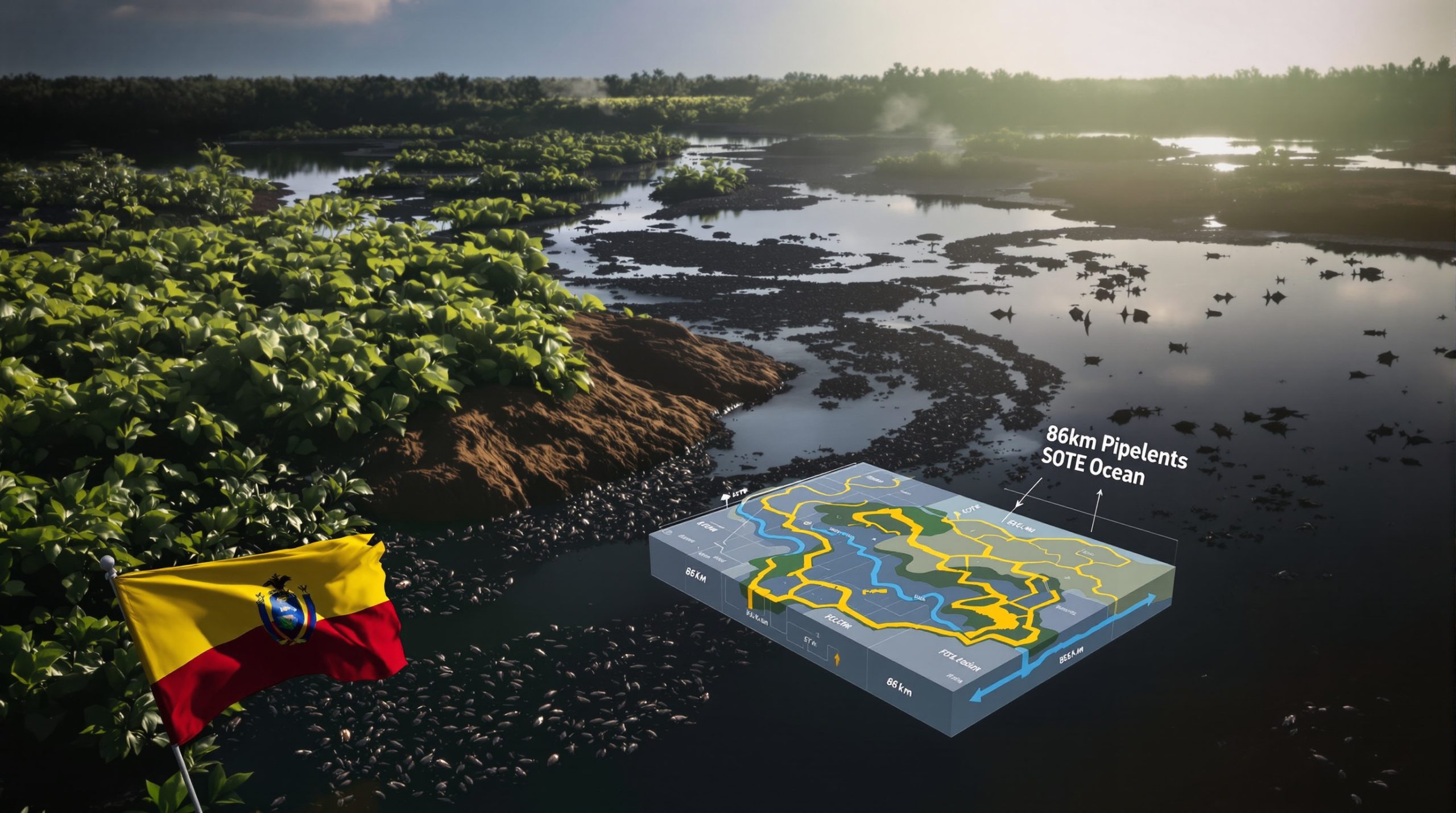Revolutionary Subsea Mining: De Beers' Next Generation Crawler Technology
What Makes De Beers' New Crawler a Game-Changer for Marine Diamond Mining?
The next generation crawler represents a significant technological leap in subsea diamond recovery, combining advanced automation, precision engineering, and decades of operational experience. This cutting-edge system enhances recovery capabilities while maintaining environmental standards, setting new benchmarks for marine mining operations.
De Beers' latest innovation marks a pivotal advancement after nearly four years of development. The crawler's sophisticated design provides approximately 20% increase in effective recovery rates while improving engineering availability from 82% to 87%, according to industry reports from African Mining Market.
This technological marvel isn't just about incremental improvements—it represents a fundamental rethinking of how marine diamond mining can operate at greater depths with enhanced precision and reliability.
How Has Subsea Diamond Recovery Technology Evolved?
The Journey from First-Generation to Next-Generation Crawlers
Marine diamond mining has transformed dramatically since its inception. Early recovery systems operated with limited efficiency, recovering diamonds at slower rates and covering smaller seabed areas. The evolution of crawler technology has progressively improved operational capabilities, with each generation addressing previous limitations while incorporating new mining innovation trends.
De Beers has been at the forefront of marine mining innovation for more than two decades, gradually refining their approach to subsea resource recovery. Each iteration has built upon lessons learned from previous models, with the latest generation representing the culmination of years of engineering expertise and operational experience.
Key Technological Milestones in Marine Mining
The development timeline shows how De Beers has consistently refined its approach to subsea mining:
- First-generation crawlers: Basic recovery systems with limited range and depth capabilities
- Mid-generation improvements: Enhanced mobility and recovery rates
- Current generation: Integration of advanced automation, precision control systems, and significantly improved recovery efficiency
This evolution reflects a broader trend in resource extraction technologies, where sophisticated engineering solutions are increasingly applied to challenging environments. The marine mining sector has particularly benefited from advances in automation, materials science, and underwater engineering techniques.
Technical Specifications of the Next Generation Crawler
Size and Operational Capacity
The new crawler represents a substantial engineering achievement:
- Weight: 370 tonnes
- Dimensions: 28 meters long, 8 meters high, 8 meters wide
- Mining arm sweep: 21-meter arc completed in just 25 seconds
- Operating depth: 100-135 meters below sea level
- Pipeline diameter: 800mm for material extraction
These specifications highlight the extraordinary scale of this underwater mining platform. To put this in perspective, the crawler weighs more than a Boeing 747 aircraft and operates in depths equivalent to a 40-story building underwater.
Advanced Engineering Features
| Feature | Function | Benefit |
|---|---|---|
| Hydraulic track tensioning | Automatically adjusts to changing conditions | Reduces wear, extends track chain life, improves torque |
| Forward-looking sonar | Provides clear seabed imaging | Enables precise recovery down to the footwall |
| Automated deployment | Controls launch and recovery operations | Ensures consistent performance and reduces structural stress |
| Enhanced dredge system | Improves material flow and processing | Increases diamond recovery rates |
The hydraulic track tensioning system represents a particularly important innovation, as Sebastian van der Laer, Mining System Specialist at Upstream Technology, points out. This system automatically adjusts as seabed conditions change, significantly reducing wear on components and improving operational efficiency.
How Does the Crawler Boost Production Efficiency?
Performance Improvements Over Previous Models
The next generation crawler delivers substantial operational advantages:
- Approximately 20% increase in effective recovery rates
- Engineering availability improved from 82% to 87%
- Enhanced ability to operate in challenging seabed conditions
- Reduced downtime through improved reliability
These efficiency gains translate directly into improved diamond recovery with minimal increases in operating costs. The system enables the Benguela Gem vessel to fully utilize the throughput capability of its onboard treatment plant, maximizing the return on investment for the entire mining operation.
Automation and Control Systems
Sophisticated automation enables the crawler to:
- Maintain optimal performance parameters automatically
- Adjust to varying seabed conditions in real-time
- Provide operators with enhanced visibility and control
- Reduce mechanical stress through intelligent operation
Technology Development Manager Imraan Parker emphasizes that AI in mining technology has been central to embedding consistent best-practice operation into the crawler. The automated systems provide more predictable performance and better control over mechanical stresses, which extends the structural life of the machine while improving operational consistency.
What Challenges Did Engineers Overcome in Development?
Design and Testing Innovations
Creating this advanced crawler required solving complex engineering challenges:
- Integration of over 2.2 km of cabling and 10,000+ connections
- Development of synchronized lifting techniques for heavy components
- Implementation of full-scale land-based simulations to test systems under realistic loads
- Collaborative design process incorporating feedback from vessel operators
One particularly notable challenge involved the installation of the massive 47-tonne dredge motor. Senior Workshop Engineering Officer Abdul-Gameed Davids explains how the team developed a synchronized lifting technique using two overhead cranes—an innovation that has now been formalized for future builds.
Engineering Solutions for Harsh Marine Environments
Operating in the demanding subsea environment required specific innovations:
- Ruggedized components to withstand high-pressure conditions
- Corrosion-resistant materials for prolonged underwater deployment
- Specialized seals and connections to maintain system integrity
- Reinforced structural elements to handle operational stresses
Before deployment, the crawler underwent extensive testing, including full-scale land-based simulations to verify all systems under realistic loads. This rigorous testing process ensured that the crawler could withstand the harsh conditions of the marine environment while maintaining optimal performance.
How Does the Crawler Operate on the Seabed?
Recovery Process and Material Handling
The crawler functions through a sophisticated process:
- Traverses the seabed using advanced track systems
- Identifies diamond-bearing material using sensor arrays
- Extracts a mixture of seawater, sand, gravel, and diamond-bearing material
- Transports recovered material to the surface vessel through the pipeline
- Enables onboard processing and diamond recovery
The recovery process begins with precise positioning on the seabed. The crawler's forward-looking sonar provides clear images of the terrain, allowing operators to recover material right down to the footwall—the bottom layer of the diamond-bearing formation.
Coordination with Surface Vessels
The crawler works in tandem with specialized vessels like the Benguela Gem:
- Real-time communication between crawler and vessel
- Synchronized operations for optimal recovery
- Continuous monitoring of performance metrics
- Adaptive positioning based on resource mapping
This coordinated approach ensures that the entire mining system—from seafloor to processing plant—functions as an integrated unit. The vessel provides power, control systems, and processing facilities, while the crawler serves as the specialized collection mechanism operating in the challenging underwater environment.
What Makes the Dual-Crawler System Innovative?
Minimizing Operational Downtime
The development of identical crawler units creates a significant operational advantage:
- Second unit can immediately replace the first during scheduled maintenance
- Minimal production interruption during servicing
- Continuous mining operations possible
- Maximized utilization of vessel processing capacity
This redundancy approach represents a significant innovation in marine mining operations. By having a second identical unit ready to take over operations, De Beers has effectively eliminated a major source of downtime that typically impacts productivity in resource extraction operations.
Maintenance and Servicing Strategy
The dual-crawler approach supports an efficient maintenance program:
- Scheduled rotation between active and standby units
- Comprehensive servicing during inactive periods
- Proactive component replacement based on performance monitoring
- Extended overall system lifespan through managed usage cycles
This strategy reflects a sophisticated approach to asset management, where maintenance is treated not as a necessary interruption but as an integral part of the operational design. By incorporating maintenance requirements into the fundamental system architecture, De Beers has created a more resilient and reliable mining operation.
What Environmental Considerations Guide Crawler Operations?
Responsible Seabed Mining Practices
Marine diamond recovery operations incorporate environmental stewardship:
- Precise mapping to minimize unnecessary seabed disturbance
- Targeted extraction focusing only on diamond-bearing areas
- Monitoring systems to track environmental parameters
- Compliance with international and local marine regulations
The crawler's precise control systems allow for more targeted extraction, focusing only on areas with diamond-bearing material. This reduces the overall environmental footprint of mining operations while maximizing resource recovery.
Balancing Resource Recovery and Ecosystem Protection
The crawler technology reflects a balance between extraction efficiency and environmental responsibility:
- Reduced footprint through more precise operations
- Minimized sediment dispersion during recovery
- Ongoing research into ecosystem impacts and mitigation
- Integration of environmental monitoring into operational protocols
Modern marine mining operations must navigate complex environmental considerations. The advanced sensors and control systems of the next generation crawler help operators minimize unnecessary disturbance to the seabed while efficiently extracting valuable resources. These innovations align with broader industry efforts to implement sustainable mining practices throughout the sector.
What Future Developments Might We See in Marine Mining Technology?
Next Horizons for Subsea Resource Recovery
The current crawler represents a platform for future innovations:
- Potential for deeper-water operations
- Enhanced automation and remote operation capabilities
- Integration with advanced mapping and resource identification systems
- Improved energy efficiency and reduced environmental impact
Rudi Agostinho, NGC Project Manager at Upstream Technology, highlights that the next generation crawler provides a robust platform for the future of marine diamond recovery by combining advanced tools, adaptive systems, automation, and predictive maintenance.
Expanding Applications Beyond Diamond Recovery
The technologies developed for diamond recovery may find applications in other marine resource sectors:
- Adaptation for other mineral recovery operations
- Application to marine research and exploration
- Transfer of technologies to underwater infrastructure maintenance
- Potential use in marine conservation and research activities
The engineering innovations developed for the next generation crawler have potential applications far beyond diamond mining. The expertise in underwater operations, automated control systems, and harsh environment engineering could be adapted for various marine industries, from underwater infrastructure maintenance to scientific research, while also helping address deep‐sea mining challenges in other sectors.
FAQ: De Beers' Next Generation Crawler
How does the crawler navigate the ocean floor?
The crawler uses a sophisticated track system combined with advanced navigation and positioning technology to precisely traverse the seabed. Operators monitor its movement through real-time data feeds, while onboard sensors provide detailed information about the surrounding environment.
The hydraulic track tensioning system automatically adjusts to changing seabed conditions, improving traction and maneuverability while reducing wear on components. This adaptive capability allows the crawler to maintain optimal performance even in challenging underwater terrain.
What happens to the seabed after mining?
After mining, natural marine processes gradually restore the seabed over time. The focused nature of modern crawler operations minimizes the footprint of mining activities, and ongoing environmental monitoring tracks recovery patterns in previously mined areas.
The targeted approach of the next generation crawler helps reduce unnecessary disturbance to the seabed. By focusing extraction efforts only on diamond-bearing areas, the system minimizes the overall environmental impact while maximizing resource recovery.
How are diamonds separated from other materials?
Once material reaches the surface vessel, it undergoes a sophisticated separation process using density differentiation, X-ray technology, and other non-chemical methods to identify and recover diamonds from the surrounding material.
The entire process from seabed extraction to diamond recovery is designed for efficiency and precision. The improved flow characteristics of the next generation crawler's dredge system help maintain material integrity during extraction, supporting more effective separation processes on the surface vessel.
What safety systems protect the crawler during operations?
Multiple redundant systems monitor pressure, temperature, mechanical stress, and other critical parameters. Automated shutdown protocols activate if conditions exceed safe operating parameters, and the crawler can be retrieved to the surface if necessary.
The high level of automation extends to safety systems, where continuous monitoring of operational parameters helps prevent damage to the crawler and ensures operator safety. These sophisticated protection mechanisms are essential for maintaining the crawler's operational lifespan in the challenging underwater environment.
How long did it take to develop the next generation crawler?
The development process spanned approximately four years, involving extensive engineering, testing, and refinement before the crawler was ready for deployment on the Benguela Gem vessel.
This extended development timeline reflects the complexity of creating advanced underwater mining technology. The project involved close collaboration between De Beers' Upstream Technology business and Debmarine Namibia's operational team, incorporating feedback from vessel operating crews throughout the design and testing process.
Setting New Standards in Marine Resource Recovery
De Beers' next generation crawler represents a significant advancement in marine mining technology, combining sophisticated engineering with practical operational experience. By boosting recovery rates while maintaining reliability, this system demonstrates how innovation can enhance resource recovery while supporting responsible mining practices. As the technology continues to evolve, it establishes new benchmarks for efficiency and performance in the challenging environment of subsea operations.
The collaboration between engineering teams and operational personnel has been instrumental in creating a system that addresses real-world challenges. From the synchronized lifting of heavy components during assembly to the incorporation of operator feedback into control systems, the development process exemplifies how technical expertise and practical experience can combine to create transformative technologies.
With its dual-crawler approach, advanced automation, and enhanced recovery capabilities, De Beers' next generation crawler system represents not just an incremental improvement but a fundamental rethinking of how marine diamond recovery can be conducted with greater efficiency, reliability, and environmental consideration. This approach also demonstrates how modern mine planning principles can be adapted for marine environments, creating sustainable and efficient extraction systems.
Ready to Catch the Next Major Mineral Discovery?
Stay ahead of the market with real-time alerts on significant ASX mineral discoveries powered by Discovery Alert's proprietary Discovery IQ model, turning complex mineral data into actionable insights. Understand why historic discoveries like De Grey Mining can generate substantial returns by visiting Discovery Alert's dedicated discoveries page and begin your 30-day free trial today.




